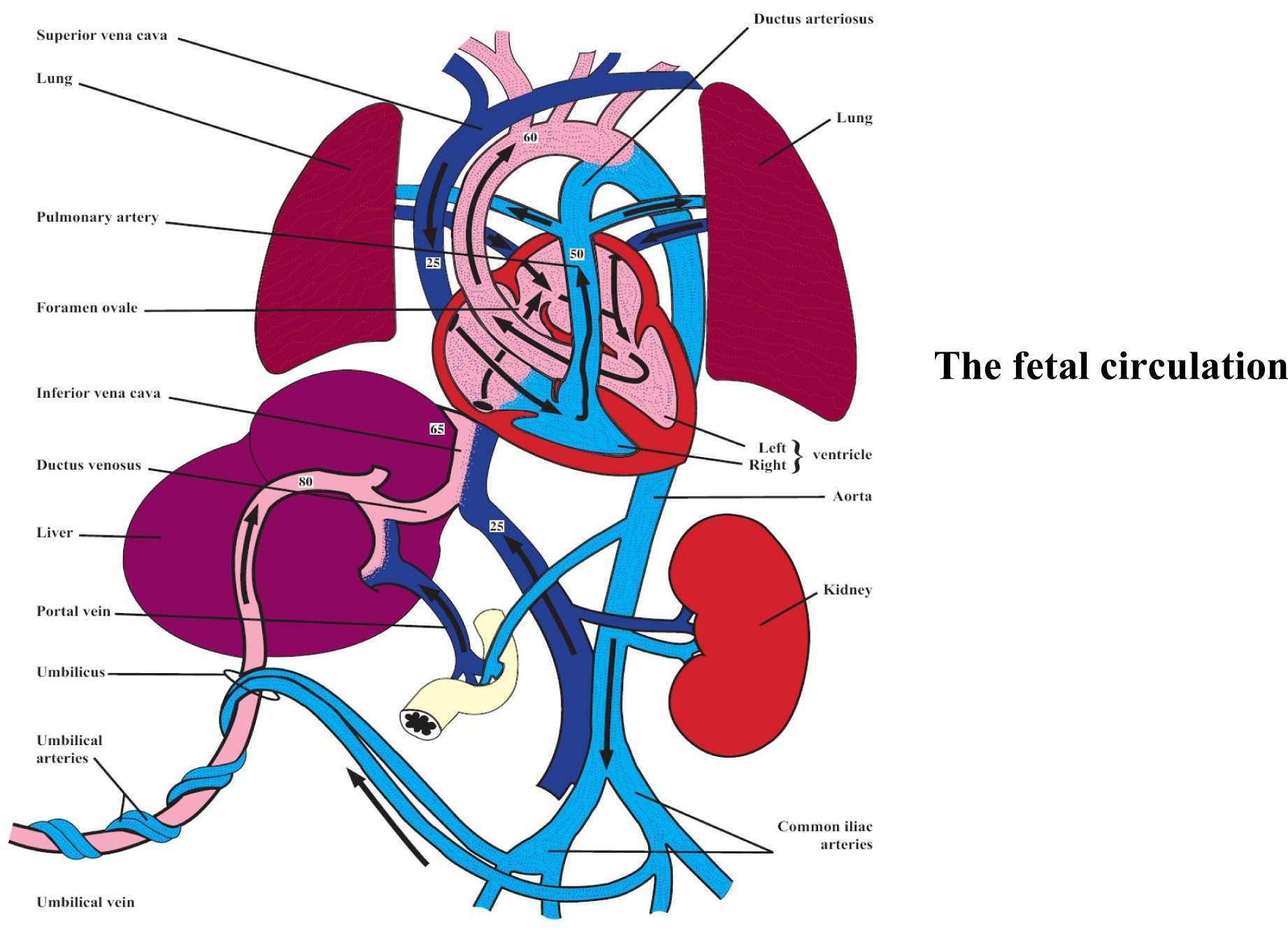Mastering Neonatology: Essential Skills for Medical Practitioners
-
Introduction of Neonatology5 Topics
-
Fetal Growth and Development4 Topics|1 Quiz
-
Neonatal Physiology9 Topics
-
Neonatal Resuscitation8 Topics
-
Neonatal Examination4 Topics
-
Prematurity and Low Birth Weight3 Topics
-
Neonatal Nutrition3 Topics
-
Neonatal Infections10 Topics
-
Neonatal Jaundice9 Topics
-
Defining Neonatal Jaundice
-
Classification of Neonatal Jaundice
-
Pathophysiology
-
Clinical Presentation and Diagnosis
-
Risk Factors Associated with Severe Jaundice
-
Differential Diagnosis of Jaundice in Newborns
-
Management of Neonatal Jaundice
-
Complications and Long-Term Effects
-
Preventive Measures and Screening
-
Defining Neonatal Jaundice
-
Neonatal Respiratory disorders7 Topics
-
Neonatal Cardiovascular disorders17 Topics
-
Overview of Fetal Circulation and Transition to Neonatal Circulation
-
Classification of congenital heart defects
-
Atrial septal defect
-
Ventricular septal defects
-
Atrioventricular septal defects
-
Patent Ductus Arteriosus
-
Patent Foramen Ovale
-
Coarctation of the aorta
-
Pulmonary valve Stenosis
-
Tetralogy of Fallot
-
Transposition of the Great Arteries
-
Tricuspid valve Atresia
-
Total Anomalous Pulmonary Venous Return
-
Persistence Truncus Arteriosus
-
Hypoplastic Left Heart Syndrome
-
Ebstein's Anomaly
-
Eisenmenger syndrome
-
Overview of Fetal Circulation and Transition to Neonatal Circulation
-
Neonatal Immunological disorders5 Topics
-
Neonatal Hematological disorders6 Topics
-
Neonatal Neurological disorders9 Topics
-
Endocrine and metabolic disorders8 Topics
-
Neonatal genetic disorders9 Topics
-
Neonatal musculoskeletal disorders10 Topics
-
Neonatal Pharmacology3 Topics
-
Neonatal surgery7 Topics
-
Family-Centered Care and Neonatal Ethics3 Topics
-
Neonatal Follow-Up4 Topics
Fetal circulation and gas exchange
Fetal circulation and gas exchange refer to the physiological processes that occur in a developing fetus to ensure adequate oxygenation and nutrient delivery. The fetal circulation system differs from postnatal circulation, and understanding these differences is essential for neonatologists to diagnose and manage neonatal respiratory and cardiovascular disorders. This topic will discuss the fetal circulation system, fetal gas exchange, and the changes that occur during the transition from fetal to postnatal circulation.

Fetal Circulation:
Fetal Circulation: The fetal circulatory system differs significantly from the adult circulatory system, as it is designed to function in the womb rather than outside the womb. The fetal circulatory system includes the following structures:
- Umbilical vein: The umbilical vein carries oxygenated blood from the placenta to the fetal liver.
- Ductus venosus: The ductus venosus is a shunt that allows a portion of the oxygenated blood from the umbilical vein to bypass the liver and flow directly to the heart.
- Inferior vena cava: The inferior vena cava carries oxygen-poor blood from the lower half of the fetal body to the right atrium of the heart.
- Foramen ovale: The foramen ovale is an opening between the right and left atria of the heart that allows oxygen-rich blood to bypass the lungs and flow directly to the left side of the heart.
- Ductus arteriosus: The ductus arteriosus is a shunt that allows oxygen-poor blood from the pulmonary artery to bypass the lungs and flow directly to the aorta.
- Umbilical arteries: The umbilical arteries carry oxygen-poor blood from the fetal body to the placenta, where it is exchanged for oxygen and nutrients.
Fetal Gas Exchange:
- The exchange of gases in the fetal circulatory system occurs primarily in the placenta. Oxygen-rich blood from the placenta flows through the umbilical vein and ductus venosus to reach the fetal heart, where it is distributed to the rest of the fetal body. Oxygen-poor blood from the fetal body flows through the umbilical arteries to the placenta, where it is exchanged for oxygen and nutrients.
- Carbon dioxide, a waste product of cellular metabolism, is removed from the fetal blood in a similar manner. Carbon dioxide is carried by the fetal blood to the placenta, where it is exchanged for oxygen. The carbon dioxide is then removed from the fetal body through the mother’s bloodstream and exhaled from her lungs.
The transition from fetal to postnatal circulation is a critical process that occurs in the newborn immediately after birth. This transition involves a series of changes in the circulatory system that are necessary for the newborn to adapt to life outside the womb and to establish normal postnatal circulation.
During fetal development, the fetal circulatory system is designed to bypass some of the immature organs that are not yet functional, such as the lungs. However, after birth, the newborn must begin to use its lungs for oxygen exchange, which requires a significant reconfiguration of the circulatory system. The key changes that occur during the transition from fetal to postnatal circulation are as follows:
- Closure of the foramen ovale: The foramen ovale is an opening between the right and left atria of the fetal heart that allows oxygen-rich blood to bypass the lungs and flow directly to the left side of the heart. At birth, as the newborn takes its first breath, the increased oxygen levels cause the foramen ovale to close. This forces blood to flow through the lungs and oxygenate the blood.
- Closure of the ductus arteriosus: The ductus arteriosus is a shunt that allows oxygen-poor blood from the pulmonary artery to bypass the lungs and flow directly to the aorta. At birth, as the newborn takes its first breath, the increased oxygen levels cause the ductus arteriosus to close. This forces blood to flow through the lungs and oxygenate the blood.
- Increase in pulmonary blood flow: With the closure of the foramen ovale and the ductus arteriosus, blood flow to the lungs increases significantly. This increases the oxygenation of the blood and decreases the pressure in the right side of the heart.
- Increase in systemic vascular resistance: After birth, the newborn’s lungs must begin to work to oxygenate the blood. This requires an increase in systemic vascular resistance, which helps to maintain a normal blood pressure in the newborn.
- Closure of the umbilical arteries and vein: After birth, the umbilical arteries and vein are no longer necessary, and they begin to close. This results in a decrease in blood flow to the placenta and a shift in blood flow to other organs and tissues in the body.
In conclusion, fetal circulation and gas exchange are crucial processes that allow the developing fetus to receive oxygen and nutrients, and to remove waste products such as carbon dioxide. The fetal circulatory system is designed to bypass some of the immature organs that are not yet functional in the developing fetus, while the placenta plays a critical role in facilitating the exchange of gases and nutrients between the fetus and mother.





